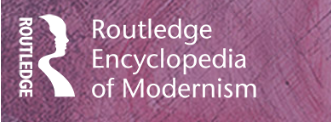Encyclopedia article on Il’f and Petrov for the Routledge Encyclopedia of Modernism (2/2017) (Expanded version available for those with login access to the REM.)
“Adapting Paratextual Theory to the Soviet Context: Publishing Practices and the Readers of Il’f and Petrov’s Ostap Bender Novels,” in The Space of the Book in Russia's Social Imagination, ed. Miranda Remnek (Toronto University Press: Toronto, 2011), pp. 252-280. (PRINT)
WHAT THE ACADEMIC REVIEWERS SAID:
“While historians can root their investigations of book production in a wealth of evidence, documentation of reader reception is harder to come by. Anne O. Fisher examines the forewords and illustrations to successive editions of Ilʹia Ilʹf and Evgenii Petrov’s novels The Twelve Chairs and The Golden Calf as snapshots of how those works were read by different people and at different times. This ‘peritextual’ apparatus was often ‘at odds’ with the main text of the novels, Fisher writes, ‘compromising any concept of the book as a unified space’ (p. 271).”
“Anne Fisher references seminal scholar Roger Chartier in her study of the reception of popular writers Il’f and Petrov, and challenges his dichotomy between writing (fixed) and reading (ephemeral) with a peritextual comparison of different editions of their Ostap Bender novels (p. 276).”
“Foreword,” in Ilya Ilf and Evgeny Petrov, The Little Golden Calf, trans. Anne O. Fisher (Russian Life Books: Montpelier, 2009), pp. 13-31. (PRINT)
Nice to see that Mark Lipovetsky quotes me in his astute CHARM OF THE CYNICAL REASON:
“The Bender novels prove that Ilf and Petrov were masters of ambiguity, but “Our Third Novel” was arguably the most important feat of ambiguity they would ever perform. It was published on a special tribute page to the White Sea Canal project, yet it talks about their (never-to-be-written) third Bender novel, not the Canal. In fact, the coauthors somehow managed to turn the absence of their continuation of the Bender saga into the presence of their “support” for the White Sea Canal book. With this one article, they neither contribute to the White Sea Canal book, nor show Ostap Bender becoming a good, useful Soviet citizen. They escape their slippery situation as smoothly as Ostap Bender himself.”
“Иллюстрация как форма комментария: “Двенадцать стульев” И. Ильфа и Е. Петрова,” in Эдиционная практика и проблемы текстологии (RGGU: Moscow, 2006), pp. 45-59.
Почему иллюстрация может интересовать литературоведа, занимающегося историей восприятия? Во-первых, потому, что иллюстрация может оказать влияние на читателя (особенно - массового читателя) и на его понимание текста. И, во-вторых, потому, что цензура оценила эту потенциальную власть иллюстрации “управлять” читателем и контролировала иллюстрацию вместе с иллюстрируемым текстом…
And there’s always my 2005 dissertation, complete with de rigueur parenthesized prefixes in the title:
“I. Il'f and E. Petrov's Ostap Bender Novels: The (Re)Production of Anti-Soviet Soviet Classics”
Abstract: The status and function of reading in Russia gave it a power which the Soviet government tried hard to control, in part through the medium of the book form itself. This dissertation analyzes book publishing practices meant to shape the reader's understanding of two hilarious, daring Soviet Russian novels about the con man Ostap Bender, The Twelve Chairs (Dvenadtsat' stul'ev, 1928) and The Golden Calf (Zolotoi telenok, 1931), and evaluates the efficacy of these practices as evidenced by reader's responses. These novels, which have been described as encyclopedias of their time, were banned after World War Two as libel but were soon reinstated as classics of Soviet satire during the Thaw and later became genuine cult classics for a new generation of readers. This popularity surge had two important consequences: in the 1970s, some intellectuals began to publicly reject the novels, claiming that by writing them their authors were collaborating with Stalin's regime, and, in the late- and post-Soviet period, other intellectuals who had grown up reading the novels found that they provided a forum for exchanging and evaluating their memories of Soviet life. Thus these popular, quintessentially Soviet novels have become a paradigmatic arena for discussions both of Soviet history and of the intelligentsia's culpability in that history. This dissertation unlocks these readings of the novels by applying Genette's theory of paratexts to the production of Soviet and post-Soviet book editions, using paratexts to reveal the disparate political and artistic agendas negotiated in each edition. By reworking Genette's typology with an emphasis on the hierarchies and rituals characteristic of a literature subject to institutionalized political control, this dissertation contributes to the theoretical understanding of the function of paratexts in book production and reception. It also models the usefulness of comparing different editions in understanding how the practical matter of putting a book together affected the way Soviet literature functioned. Although the Bender novels mock the characteristic Russian valorization of cultured reading, they became the carriers of a national debate about Soviet Russian culture, a debate about the proper attitude toward a compromising history and the culpability of those who survive under a totalitarian regime.




